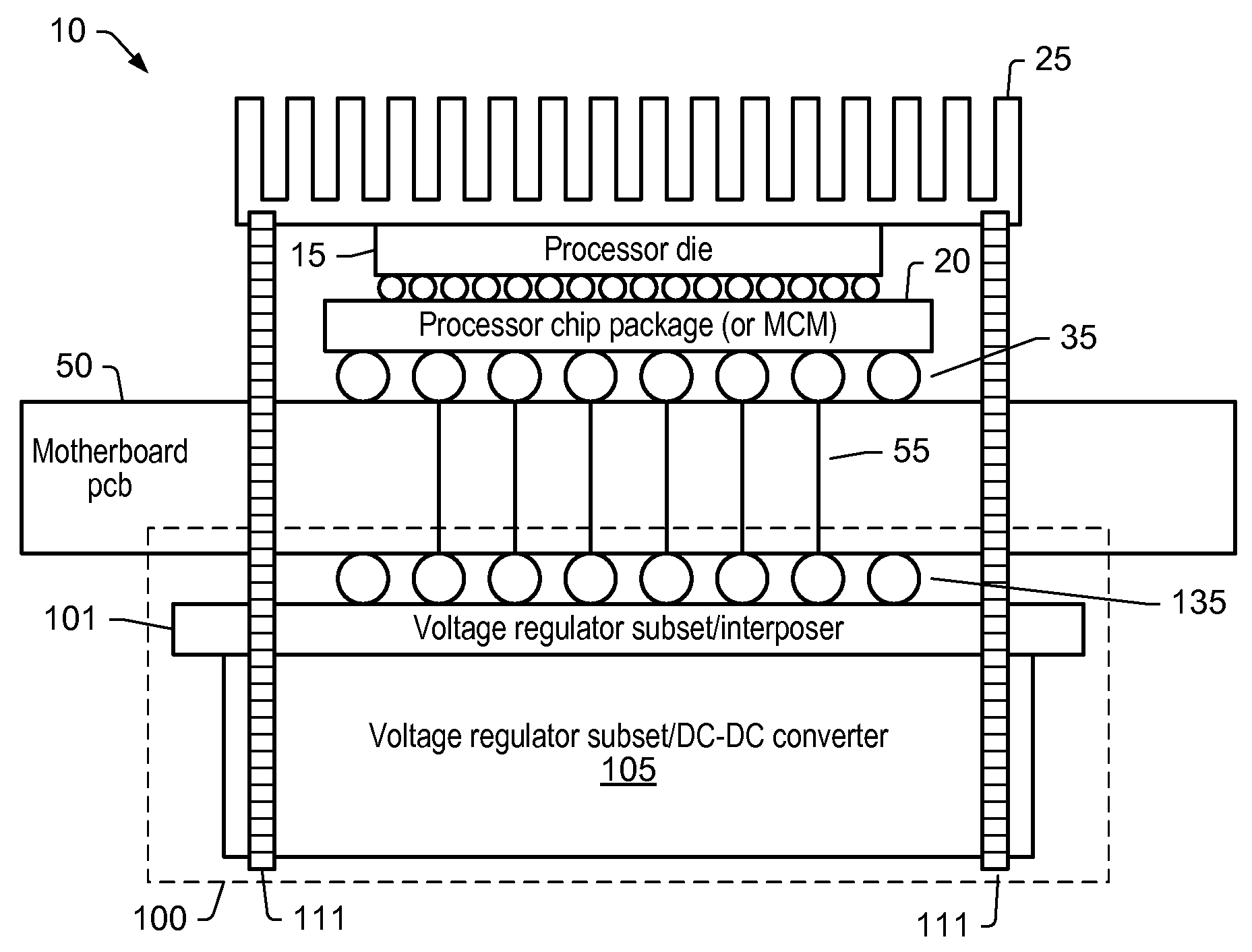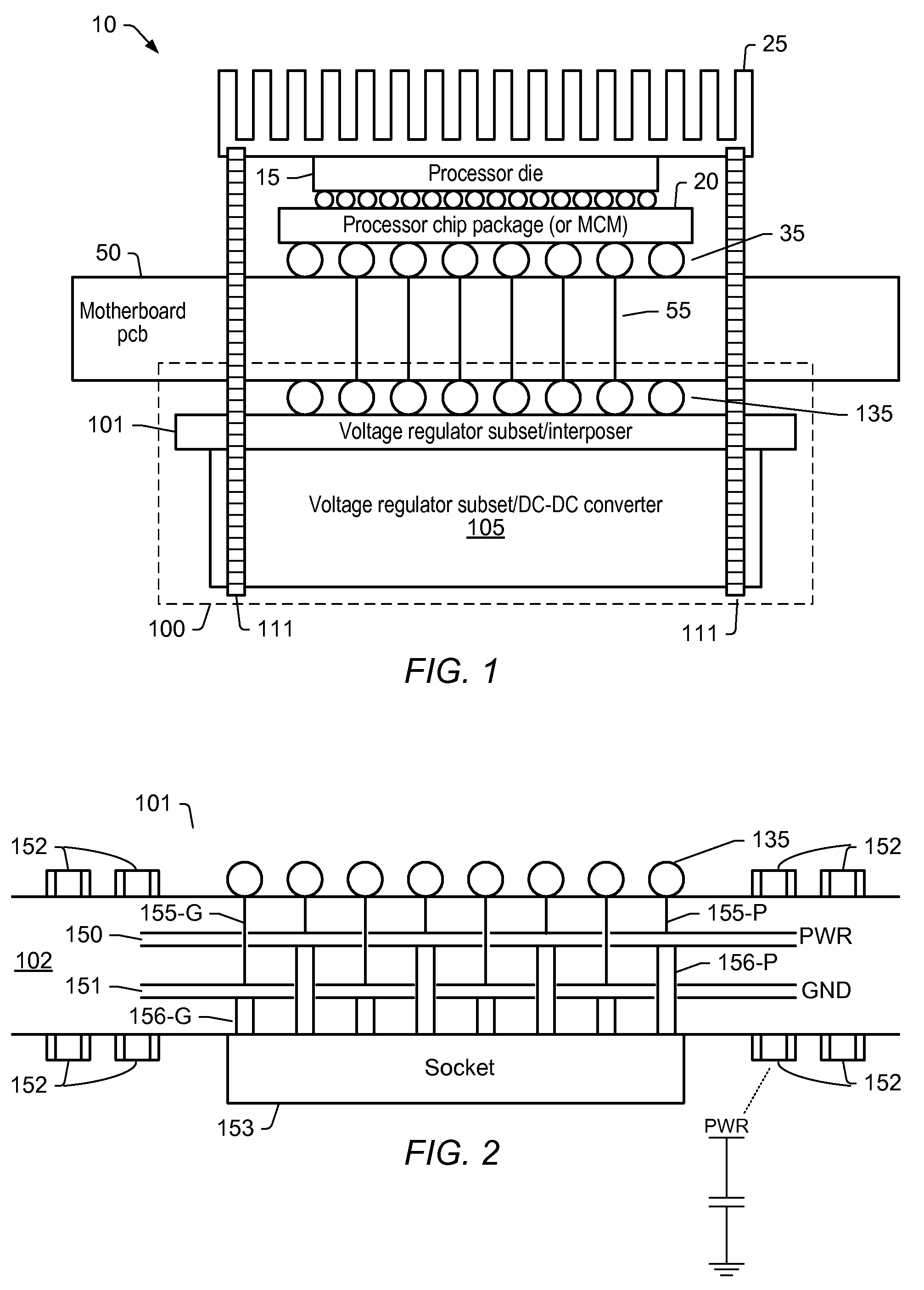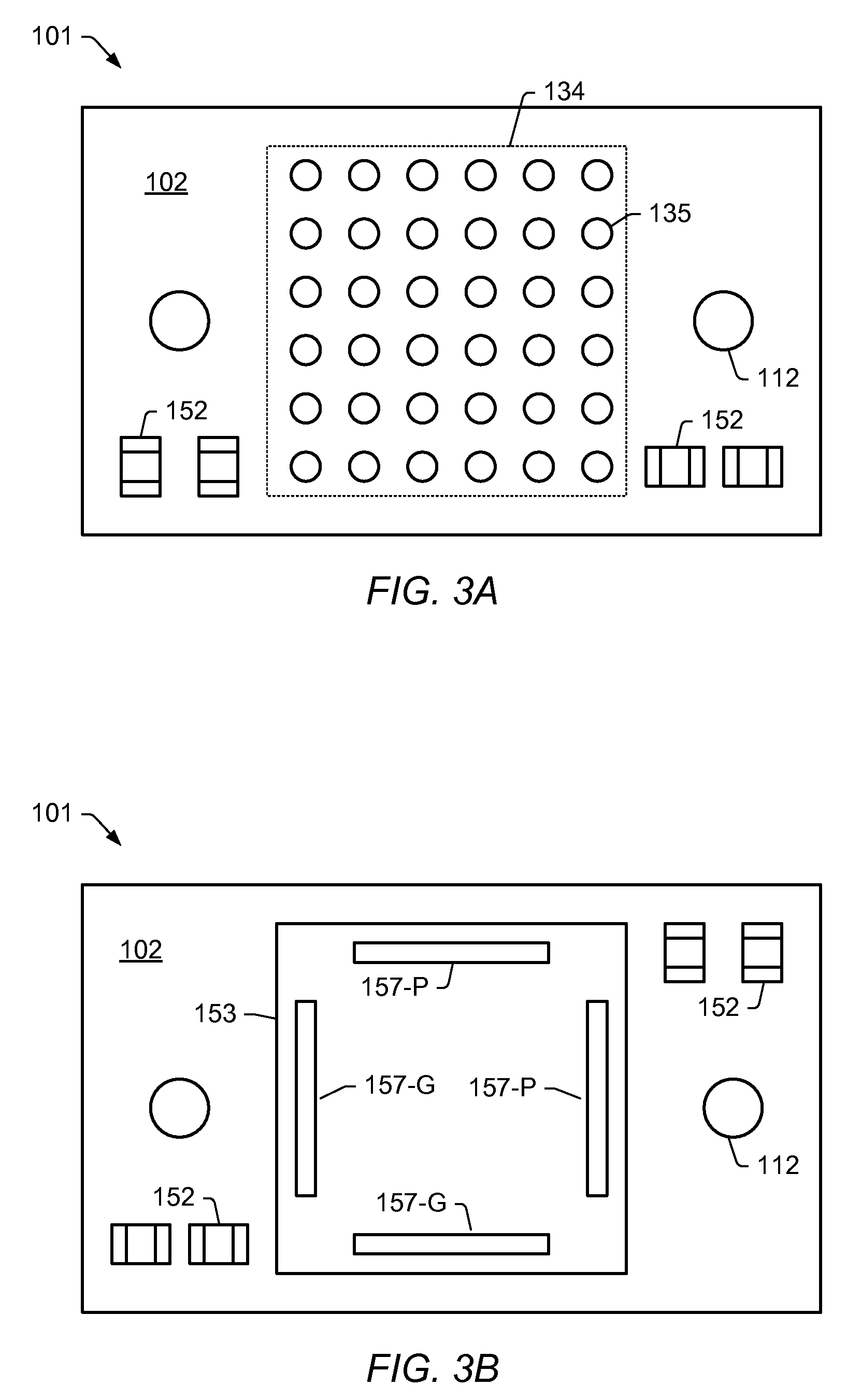Voltage regulator attach for high current chip applications
a voltage regulator and high current chip technology, applied in the field of electronic systems, can solve the problems of not being suitable for soldering to a pcb, dc-dc has a significantly greater thermal mass, etc., and achieve the effect of small thermal mass and greater thermal mass
- Summary
- Abstract
- Description
- Claims
- Application Information
AI Technical Summary
Benefits of technology
Problems solved by technology
Method used
Image
Examples
Embodiment Construction
[0018]FIG. 1 is a drawing of one embodiment of an electronic assembly having a two-piece voltage regulator. In the embodiment shown, electronic assembly 10 includes a motherboard PCB (printed circuit board) 50 with a processor chip package 20 mounted to a first side and a voltage regulator 100 mounted to a second side. Processor chip package 20 includes a processor die 15 mounted thereon. It should be noted that embodiments having multiple chips coupled to processor chip package 20 are possible and contemplated, and as such, processor chip package 20 may be a multi-chip module (MCM). In this particular embodiment, a heat sink 25 is coupled to processor die 15 in order to disburse heat during operation.
[0019]Processor chip package 20 is coupled to motherboard 50 via a plurality of solder balls 35 arranged to form a ball-grid array (BGA). Embodiments utilizing pads forming a land-grid array (LGA) are also possible and contemplated (e.g., elastomeric connections, solder bumps, etc.). I...
PUM
| Property | Measurement | Unit |
|---|---|---|
| current | aaaaa | aaaaa |
| thermal mass | aaaaa | aaaaa |
| power | aaaaa | aaaaa |
Abstract
Description
Claims
Application Information
 Login to View More
Login to View More - R&D
- Intellectual Property
- Life Sciences
- Materials
- Tech Scout
- Unparalleled Data Quality
- Higher Quality Content
- 60% Fewer Hallucinations
Browse by: Latest US Patents, China's latest patents, Technical Efficacy Thesaurus, Application Domain, Technology Topic, Popular Technical Reports.
© 2025 PatSnap. All rights reserved.Legal|Privacy policy|Modern Slavery Act Transparency Statement|Sitemap|About US| Contact US: help@patsnap.com



